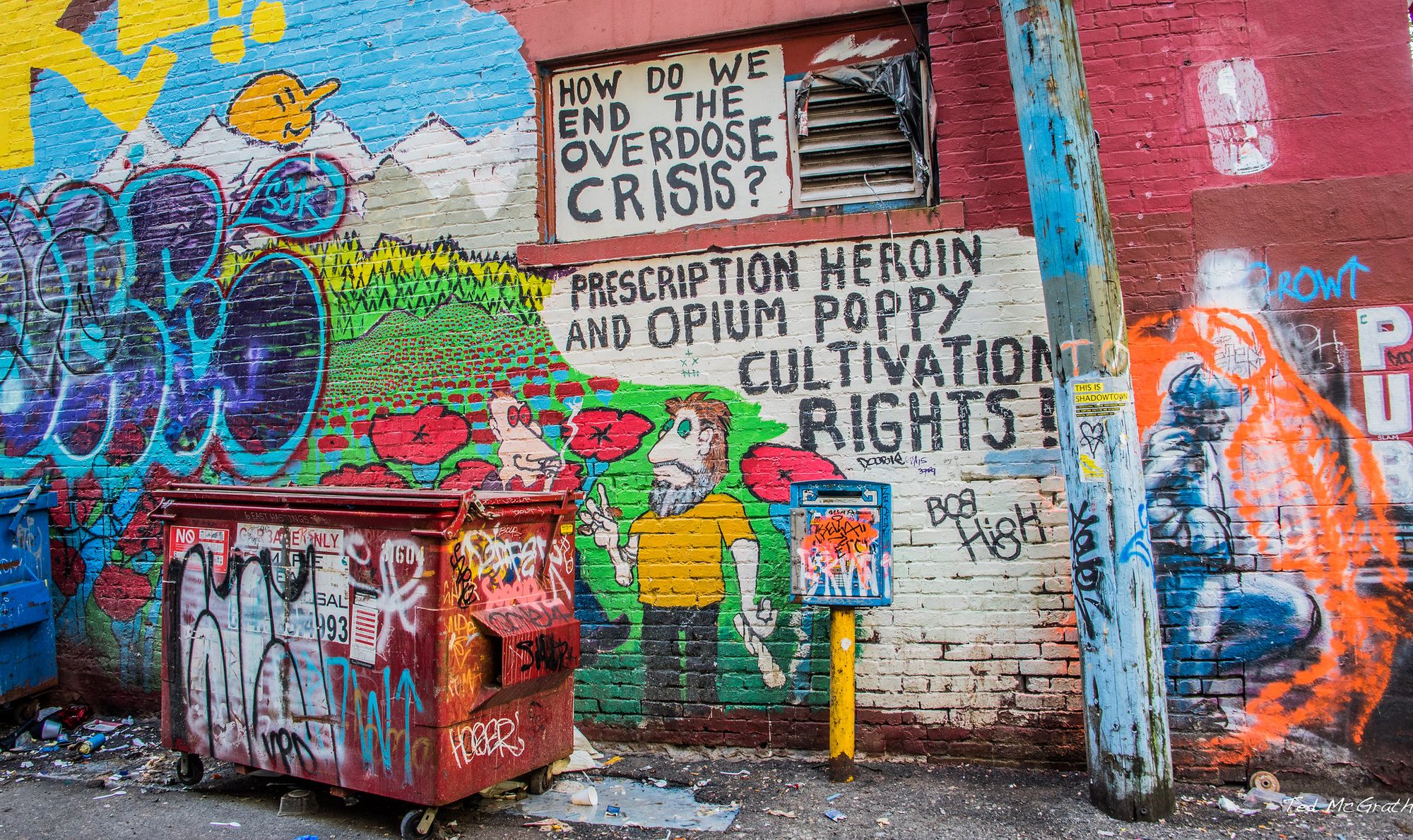Between January 2016 and June 2022, more than 32,000 people in Canada died due to apparent drug toxicity — about 14 deaths per day. Various reports have confirmed that the contamination of illicit drugs with other substances is responsible for a significant portion of these deaths. In December 2022, for example, the Public Health Agency of Canada released a statement noting that fentanyl was involved in about 76 per cent of drug deaths that year.
There is a clear solution to this crisis, which has been advanced by users, activists, researchers and some public health boards alike: providing an uncontaminated supply of drugs and offering a safe environment for people to use them. These harm reduction policies include safe injection sites, needle exchanges and supply, decriminalization of possession of drugs, and eventually a legalization of drugs.
Mainstream media coverage of the drug toxicity crisis, however, has hindered the implementation of these solutions by misrepresenting them, failing to hold politicians who lie about them to account and boosting other, unproven strategies.
Decriminalization
More than 4,500 drug toxicity deaths occurred in British Columbia between 2021 and 2022 alone. In 2021, the province pushed for, and was later granted, an exemption to the Controlled Drugs and Substances Act, making the possession of certain drugs under a specified amount legal. This legislation came into effect on January 31, and is set to last for three years. Media coverage of this event, however, has been problematic. One major issue is the way decriminalization is portrayed.
On January 31, the National Post published a newsletter with the headline “How drug decriminalization in B.C. could make everything worse.” In the newsletter, the writer erroneously claims that Vancouver has had “de facto decriminalization” for the past 10 years. While drug possession charges approved by Crown counsels in the city fell in recent years, the laws hadn’t changed and Vancouver police still made arrests. This is a far cry from legislatively enacted decriminalization, and therefore, recent years in Vancouver shouldn’t be used to discredit the concept.
The issue of negative portrayal isn’t limited to opponents of decriminalization, however. In a February 4 editorial, for example, the Toronto Star calls decriminalization a “bold experiment.” This is intended to portray the strategy as a courageous step in the right direction, with the article praising B.C. and Toronto for their interest in it. Unfortunately, however, by depicting decriminalization this way, it validates the claim that the policy is some sort of new, untested idea, which may only work in theory.
The move is certainly historic within Canada, but decriminalization in various forms has been attempted outside the country, and the results show that it works. After decriminalizing hard drugs in 2001, for example, Portugal’s drug death rate dropped sharply, and as of 2018, it was just a fiftieth of that of the United States. In 1991, Switzerland began implementing a range of new harm reduction policies, including decriminalizing drug use and opening safe injection sites. The number of drug-related deaths dropped by more than 62 per cent from 1995 to 2020.
Praising Failed Policy
This bothsidesism isn’t limited to undermining decriminalization efforts — it also extends to uncritically repeating the propaganda of its opponents.
For example, an editorial from The Globe and Mail published on January 26 argued that decriminalization is “a necessary, but not sufficient, policy to save lives,” which is something most activists and researchers would agree with. But in their proposal for additional measures, the Globe’s editorial board gives a shout out to Alberta.
The province is currently led by Premier Danielle Smith, who has done little to nothing to indicate that she’ll be moving away from the policies of her predecessor, which involved shutting down safe consumption sites and increasing funding for abstinence-based “recovery beds,” — a strategy that helped lead Alberta to a 23 per cent increase in drug-related deaths between January to March of 2021 and the same period in 2022. These policies, which run contrary to the principles of harm reduction, have been met with protest from the province’s drug policy advocates. And yet, the Globe treats it as “fact” that “both provinces have made some good moves.”
The Globe editorial specifically mentions Alberta’s new $24-million recovery centre in Red Deer. In February, the CBC ran a special feature on the centre and its architect, chronicling his rise to influence. Focusing on the supposed luxuriousness of the treatment centres, with its movie theatres and “big windows,” the piece portrays its opening as a decisive move in the battle against drug deaths. There’s no mention of the safe consumption sites that were shut down in the province. And any pushback against the flawed ideas guiding this treatment centre is framed as an ongoing ideological “debate” with no definite answer. In reality, it’s the policies of this centre, not the evidence-based harm reduction ones, that are ideologically motivated and have been catastrophic.
Safe Supply
The reporting surrounding decriminalization is, at this point at least, broadly positive. The same can’t be said for coverage of proposed safe supply and legalization efforts.
On January 2, the National Post published an article from a columnist claiming safe supply programs “foster dependency through easy access to free drugs.” Even while largely calling for more harm reduction policy, a September 2019 CBC article quotes a critic of legalization arguing that safe supply of drugs enables addictions. This is par for the course for the CBC, as the outlet has repeatedly framed safe consumption sites as controversial and unpopular. A February 2021 article from The Globe and Mail, meanwhile, says that “at its worst,” safe supply is an “easy out for governments that have failed to meaningfully address bad drug policy, broken addiction treatment systems and the root causes of problematic drug use.”
In reality, safe supply policies are an attempt to meaningfully address these issues. According to advocate organization Harm Reduction Toronto, safe supply centres “reduce overall drug use and addiction over time.” Meanwhile, a study published in the Canadian Medical Association Journal last year found that rates of emergency room visits and hospitalizations for people enrolled in a safer opioid supply program in London, Ont., “declined significantly.” The authors concluded: “Our findings provide preliminary evidence that [safer opioid supply] programs can play an important role in the expansion of treatment and harm reduction options available to people who use drugs at high risk of drug poisoning.”
Mainstream media readers may come away with the impression of a drug crisis whose origins are unknowable and solutions disputed and risky, but the truth is very different. Treating decriminalization, harm reduction and safe supply as an unknown, a risk, carries with it the implication that the current carceral system is the safe choice. That might be true for politicians fearful of rocking the boat, but it’s not safe for the hundreds of thousands of people in Canada who have to face the risks of contaminated drugs, police harassment and incarceration.
In regurgitating defences of the status quo and smearing alternatives, the media is giving fuel to those who would continue to pursue the disastrous course we’re on, lengthening and worsening the drug toxicity crisis and putting more lives in danger, all in the name of ‘balance.’ While they engage in a sham debate, people are dying.







Member discussion